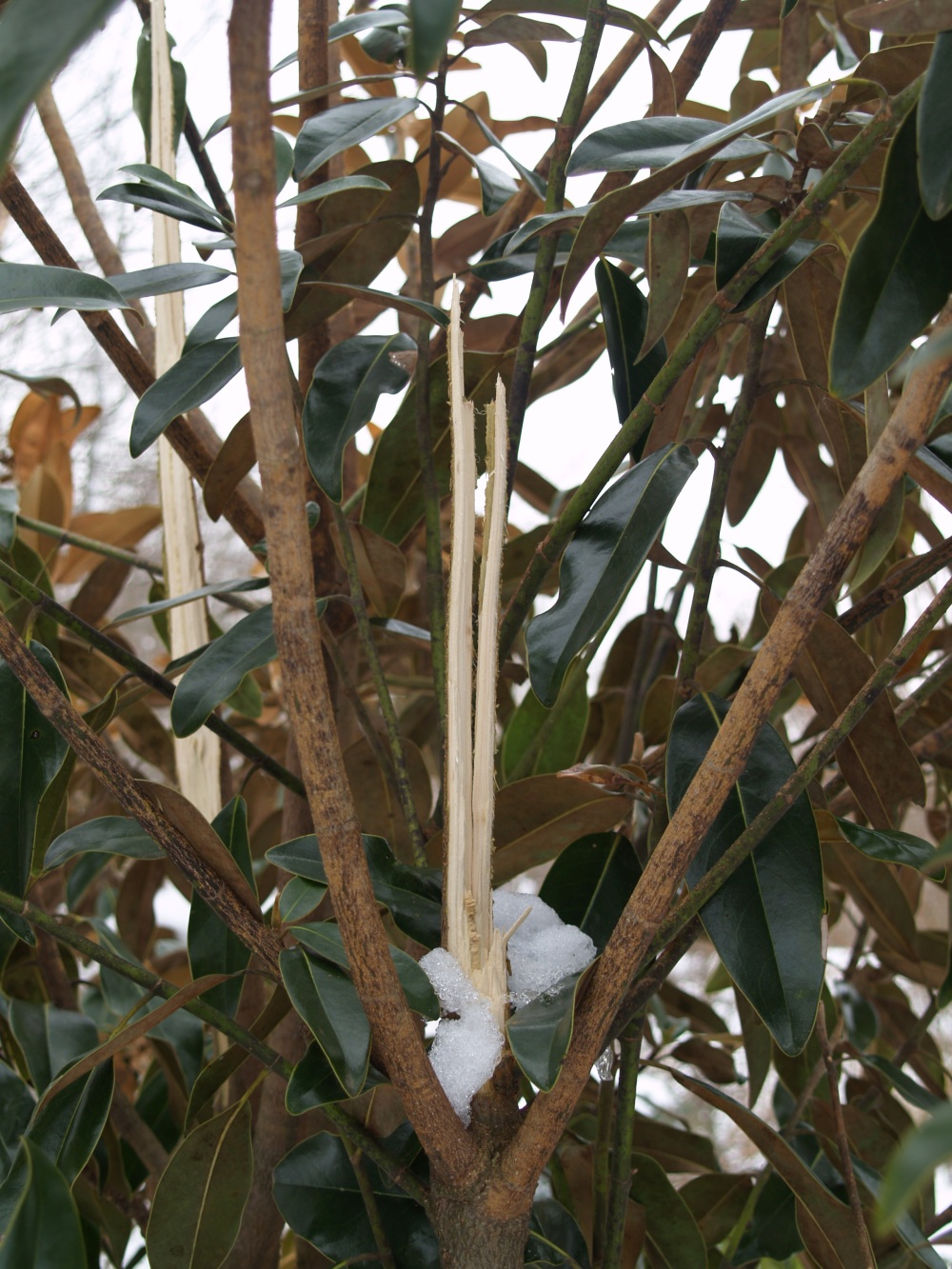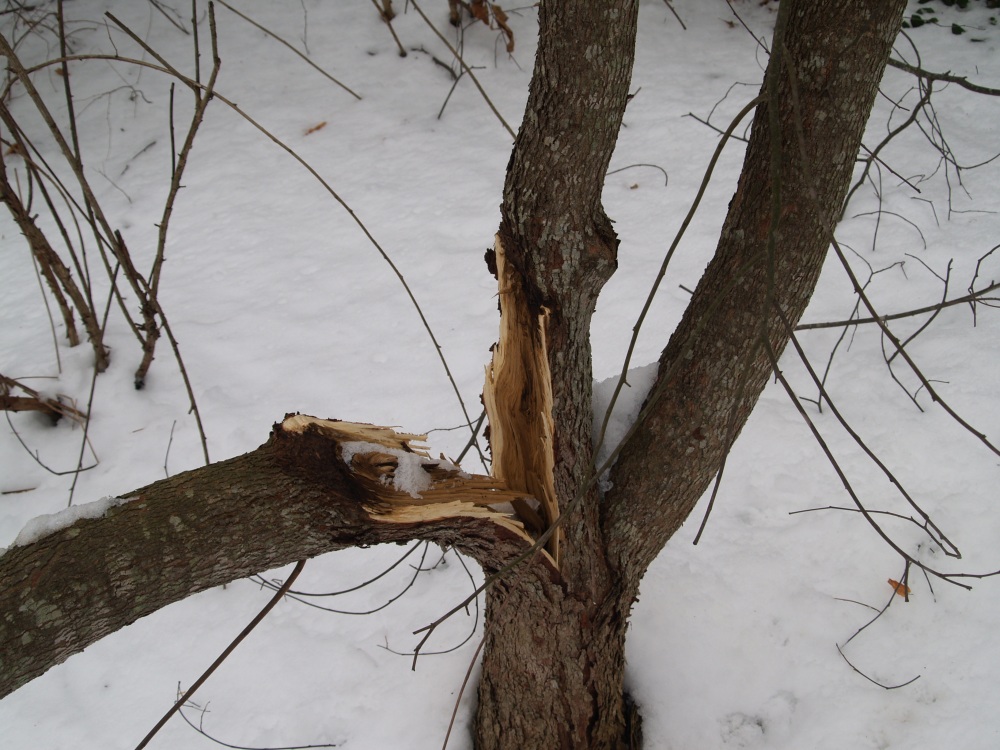On this morning of the third day following seven or eight inches of heavy, wet snow I have trudged through the garden to further survey damage, and the results are disheartening one moment, encouraging the next. My immediate impression on the morning after the storm was that injury would be more prevalent, and more significant than from the deeper, but drier (and thus lighter) snows from the previous winter. Today, my initial observation was confirmed, though the damage appears less severe for evergreens, and much worse for deciduous trees (those that lose their leaves in the winter months).
Branches of tall evergreen junipers and cryptomerias have been bent under the weight of the heavy snow, but with some melting over the past days most of the snow has been shed. The branches are beginning to spring back to their regular form, and I suspect that most will regain their upright manner without requiring elaborate pruning or tying (see ‘Split and Splayed’ from March 2010).
Evergreen magnolias (above) suffered considerably last winter, and again they are a sad sight, with numerous broken branches and central leaders. Of three southern magnolias in my garden, two were substantially broken last year, while one escaped with only minor injury. This year this smaller magnolia has had its top broken, as well as several other upright growing branches. The other two magnolias are several years away from recovering from last year’s damage, and have had more inflicted by the recent snow. I will prune the broken branches once milder weather returns, then evaluate the damage to see if the trees will remain or must be discarded.
Damage to shrubs and small evergreens that remain buried is still to be determined, and I will not risk further injury by attempting to excavate snow from around fragile branches. These were buried for several weeks in February last year, and with the exception of shrubs that suffered catastrophic damage when large sheets of snow fell off roofs, there was little permanent injury. I expect the same to be true this year, and it is more likely that branches will be broken while snow is being removed, rather than letting it melt.
A year ago I commented that deciduous trees were spared the brunt of damage, though some weeping forms of Japanese maple suffered splitting at the tree’s crown. In some instances this damage could be repaired by pruning, or by bolting the injured parts together. An internet search for “snow damage to Japanese maples” will yield information, and some helpful videos that might save a severely damaged tree. I fear that soft wooded Japanese maples might suffer inordinately again this year.
The ground beneath the large, upright growing ‘Seriyu’ Japanese maples is littered with broken branches, and if the trees’ canopies were not so full I would fear that they would be severely diminished. The dense branching is likely to have contributed to capturing sufficient snow that the weak wood would not withstand the weight, but I am confident that once the broken branches are removed the tree will fill in adequately this spring.
Through today, I have not been motivated to venture out into the cold, except to shake the snow from a few of the trees and evergreens in the garden, and I don’t plan to address the injuries until a warmer day. Besides the battered magnolias, I fear that the most severe damage is to a variegated ‘Silver Cloud’ redbud (above), and I will have a few days to consider the severity of this split trunk. The break is deep, and with the structure of the redbud’s branching I don’t see that it will be practical to bolt the injury. Cutting the damaged branch away will leave a considerable wound, so that I am not optimistic at this point. Perhaps I will be more inspired after a few days to figure a way to save this tree. 
On the morning after I gently brushed snow from the ten foot tall ‘Arnold’s Promise’ witch hazel (above) that was bent to nearly knee high, and today it has sprung back to its original form. This was encouraging, but I was further delighted to notice the first signs of color from bloom buds that will open to brilliant yellow ribbons in only a few weeks. Damage from last year proved to me that no matter the severity of damage, the garden will rebound more fully than is possible to imagine at this juncture.
As soon as a warmer day or two arrives, I will return to show the process in repairing damage to these trees, and also to check on the progress of shrubs as they emerge from the melting snow.